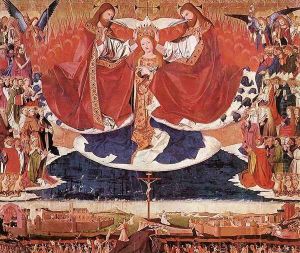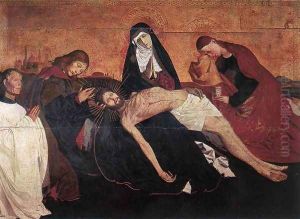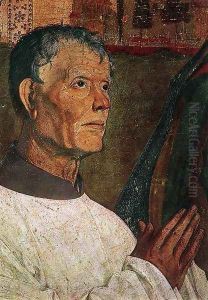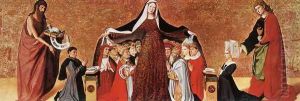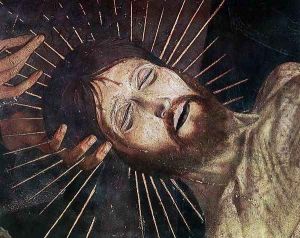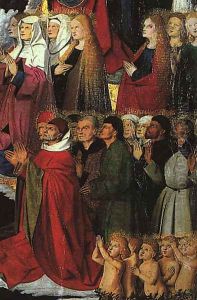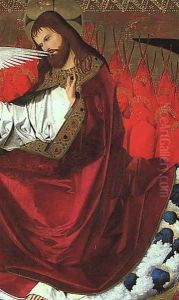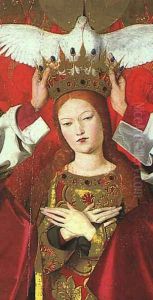Enguerrand Charonton Paintings
Enguerrand Charonton was a French painter of the Early Renaissance, born in approximately 1410, though the exact date remains uncertain. His work is associated with the region of Provence and the town of Avignon, which at the time was a vibrant center for religious and cultural activity. Charonton's most productive period was in the mid-15th century, a time when the influence of Italian Renaissance art was beginning to permeate through France, although local Gothic traditions remained strong.
Charonton is particularly noted for his devotional panel paintings, and he was highly regarded for his skill in rendering sacred subjects with a delicate and refined touch. His style is characterized by its elegance, attention to detail, and the serene expressions of his figures, which convey a sense of piety and devotion. One of his most famous works is 'The Coronation of the Virgin', painted in 1454 for the Carthusian monastery in Villeneuve-lès-Avignon. This piece is considered one of the masterpieces of 15th-century French painting and is praised for its intricate iconography and use of color.
Despite the fame he garnered during his lifetime, not much is known about Charonton's life, and only a few of his works have been firmly attributed to him. Documentation regarding his training and influences is sparse, but it is believed that he was familiar with the works of the brothers Van Eyck and other Netherlandish artists, whose detailed approach to painting can be seen in Charonton's own meticulous technique.
Enguerrand Charonton's contributions to the art of the French Renaissance were significant, particularly in the way he integrated Northern European influences into the French artistic tradition. His work reflects the changing tastes and ideas of his time and provides an important link between Gothic and Renaissance styles in France. Charonton died in 1466, leaving behind a legacy that would influence Provencal painters for generations.
